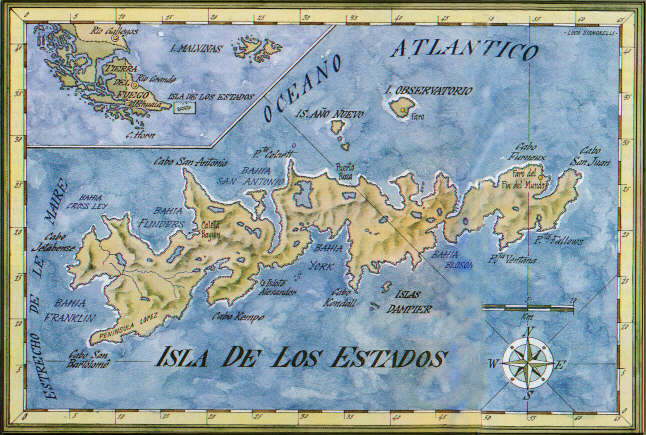The project includes a kayak trip from Tierra del Fuego to Isla de los Estados and the subsequent circumnavigation of the island.
Isla de los Estados always held great attraction full of mystery, both for the European and for the indigenous people of the region.
“Chuanisin, Jaius o Koin Harri”... different names of the island over the years.
Isla de los Estados: Named by Willem Schouten and Jacob Le Maire in 1616.
Chuanisin: the “Land of Abundance” for Yamanas canoers.
Perhaps this was the reason why they sailed their bark canoes across the treacherous Strait of Le Maire, settling on its shores. Although according to archaeological remains, they never occupied the island for a long period of time.
What was the motivation for the Yamanas to arrive at the island using bark canoes?
Maybe they were hoping to find land with a abundant food, or most likely curiosity to see this unknown region in person.
Koin Harri: “The mountain of the Roots” for the Selk´nam people.
Jaius: the place of Origin for the Haush people. The Wizards considered it the source of their power and the cold region.
According to the sacred tradition of the Selk´nam and Haush people (native hunters on foot), two powerful shamans representing the Wind and Sea fought in the deep waters where the two great oceans collide. The Wind won the battle. For revenge, the Sea made two female powers to confront, the one who was defeated turned into a big rock and went to the bottom of the sea in the waters of the strait, for that reason they are so rough.
The Chaman who represented the Sea opened a gap and created the narrow “Sati” then put their daughters on the other side to protect them from a wizard.
The land separated from the Big Island was called “JAIUS”. The island stayed there alone, away from everyone.
Today, we are in search of THE LAND THAT WAS KEPT AWAY FROM ALL.
7 abr 2010
Suscribirse a:
Enviar comentarios (Atom)











No hay comentarios:
Publicar un comentario